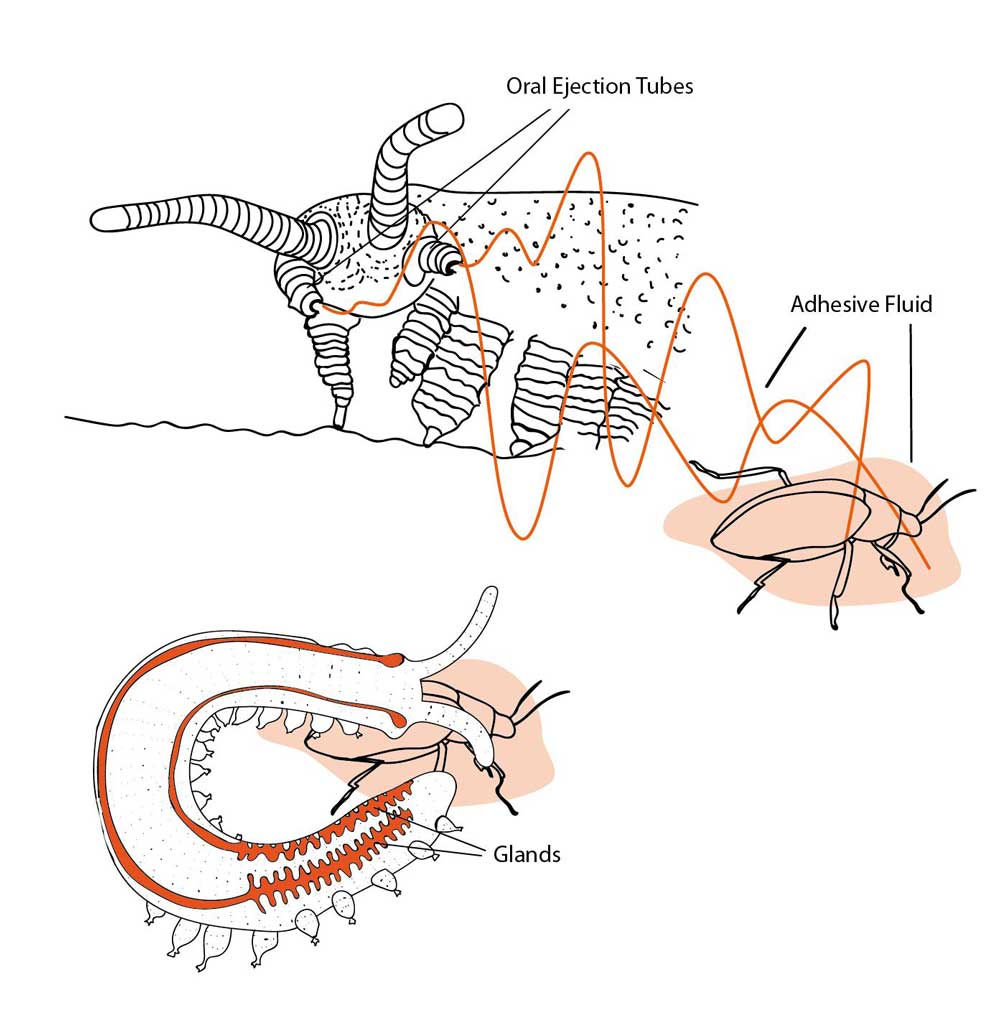For a circular economy, it is necessary to design products that can be disassembled after their using phase so that we can use all components and materials repeatedly. Usually, glued components inhibit that process.
But what if there exists a glue that is completely water-soluble after use and created without any toxic ingredients in ambient conditions?
Have you ever wondered if it is possible to create glue without toxic components?
A fascinating example where an organism can create a high-tech material that is completely water-soluble and built within the average temperature is the Velvet worm (Onychophora Euperipatoides rowelli).
It can eject a fluid hunting slime that forms an entangling net to trap prey. Then, the ejected adhesive is returned to the water in the body of the worm, and the fibers dissolve, and newly regenerated fibers can be drawn from the fiber solution.
Velvet worm catching prey:

image © ulla soeder inspired by alexander baer, nature communications, 2017 and bioscience, 2017
So it is a liquid superglue without any toxical ingredients that can form a stiff net and, after use, dissolve completely in water. Isn’t that amazing?
Nanoparticles from the Secretion of Velvet Worms form Polymer-Fibers
The illustration shows the process:

image © ulla soeder inspired by alexander baer, nature communications, 2017 and bioscience, 2017
Onychophora ejects a fluid hunting slime that forms an entangling net to trap prey.
The slime consists of unstructured proteins, fatty acids, carbohydrates, and free amino acids in the form of lipid-protein nanoglobules. These form a protein-enriched core with lipid-rich coating with regularly spaced droplets. A synergy of mechanical and chemical factors supports fiber formation and regeneration (Baer et al., 2018).
After the velvet worm has entangled its prey with the sticky net, it devours it together with its ejected adhesive. When it is returned to the water in the slime glands inside the worm, the stiff fibers dissolve and form back into nanoglobules.
And what is furthermore fascinating is: Newly regenerated fibers can be drawn from the dissolved fiber solution again and again.
Highlight is beside this, the whole self-assembly of the adhesive fibers occurs independently of the worm, outside the body under ambient conditions, and the dried fibers show a material stiffness like silkworm silk or Nylon (Baer et al., 2017).
These stiff, fully water-soluble fibers and their cyclic process could be an amazing model for recyclable, sustainable synthetic polymers.
Research References
Baer A, Schmidt S, Haensch S, Eder M, Mayer G, Harrington MJ. Mechanoresponsive lipid-protein nanoglobules facilitate reversible fibre formation in velvet worm slime. Nat Commun. 2017;8(1):974. Published 2017 Oct 17. doi:10.1038/s41467-017-01142-x
Baer A,Haensch S, Mayer G, Harrington MJ. Reversible Supramolecular Assembly of Velvet Worm Adhesive Fibers via Electrostatic Interactions of Charged Phosphoproteins. Biomacromolecules 2018 19 (10), 4034-4043 DOI: 10.1021/acs.biomac.8b01017
